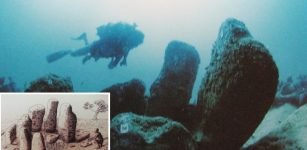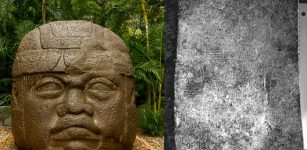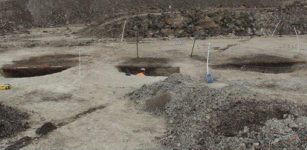Stone Artifacts Reveal Humans Lived In Philippines 700,000 Years Ago – Much Earlier Than Previously Thought
AncientPages.com - Several discovered stone artifacts have just re-written ancient history of the Philippines and reveal humans lived in the country 700,000 years ago, hundreds of thousands of years earlier than previously thought.
The artifacts were unearthed by an international team of researchers, including Dr. Gerrit "Gert" van den Bergh, from University of Wollongong's Centre for Archaeological Science during an excavation at Kalinga on Luzon, the largest and most northerly island in the Philippines.
As many as 57 stone tools were found and they consist of consist of 49 sharp-edge flakes, six cores (flaked stones used as the source material for the flakes) and two possible hammer stones.
According to researchers, the find radically changes our understanding of hominin colonization of the Philippines; the earliest evidence of hominins in the area prior to this research was a small foot bone found in nearby Callao Cave and dated to 67,000 years ago.
The fossils and stone tools were found in a clay bed dated to between 777,000 and 631,000 years ago. This conclusion was reached by combining several dating methods (including Electron Spin Resonance, argon dating and uranium series dating), confirming that the butchering of the rhino took place around 700,000 years ago.
This discovery gives scientists many reasons to re-think how early hominins (all human species closely related to or directly ancestral to modern humans) spread throughout the islands of South East Asia.
Dr. van den Bergh, an Australian Research Council Future Fellow, said it was most likely that these early humans spread through Island South East Asia from north to south – with Luzon as one of the stepping stones – following the ocean currents south and eventually reaching Flores to give rise to the ancestral population that led to Homo floresiensis (commonly known as the 'Hobbit').
See also:
Large Collection Of At Least 2,500-Year-Old Cave Paintings Discovered In Indonesia
Thousands Of Remarkable Megaliths On The Sumba Island
Makhunik – 5,000-Year-Old City Of The Dwarfs
"Our hypothesis is that the 'Hobbit' ancestors came from the north, rather than travelling eastward through Java and Bali," he said.
Until recently, it was believed Luzon and the other islands of Wallacea (those islands east of the Wallace Line, separated from the rest of Asia and from Australia by deep water) could not have been reached by premodern hominins as it was assumed they didn't have boats (islands west of the Wallace Line were joined to the mainland when sea levels were lower).
However, the discovery of the 'Hobbit' fossils on the Indonesian island of Flores in 2003 and more recent discoveries show that very early traces of hominin colonization on the Indonesian Island of Sulawesi thousands of years ago. Later, researchers found evidence that ancient Hobbits are 600,000 years older than previously thought.
Dr. van den Bergh, who is a palaeontologist as well as a sedimentologist (his analysis of the geological layering of the site was one of the methods used to date the artefacts found at Kalinga), said the dispersal of fauna through the Wallacean islands supports the theory of hominin colonization from the north.
Lithic artefacts from Kalinga. Credit: Nature
"If you look at the fossil and recent faunas you see that there is an impoverishment as you go from north to south," he said. "On Luzon you find fossils of stegodons, elephants, giant rats, rhino, deer, large reptiles and a type of water buffalo. On Sulawesi, the fossil fauna is already impoverished; there's no evidence of rhinos or deer ever entering there. Then on Flores, you only had stegodons, Komodo dragons, humans and giant rats, that's all.
"If animals did reach these islands by chance, by entering the sea and following the currents south, then you would expect the further south you go the fewer species you would find – and that's what we see."
While it's possible, if unlikely, that the first human colonisers of the Philippines were able to construct simple rafts, Dr. van den Bergh believes they more likely arrived by accident.
"They may have been caught in a tsunami and carried out to sea—those kinds of freak, random events are probably responsible for these movements of humans and animals. This region is tectonically active so tsunamis are common and there are big ones every hundred years or so," he said.
This discovery is likely to lead to efforts to find even earlier archaeological evidence as well as to fill in the blanks between then and now.
'Earliest known hominin activity in the Philippines by 709 thousand years ago' is published in Nature on 2 May 2018.
AncientPages.com























